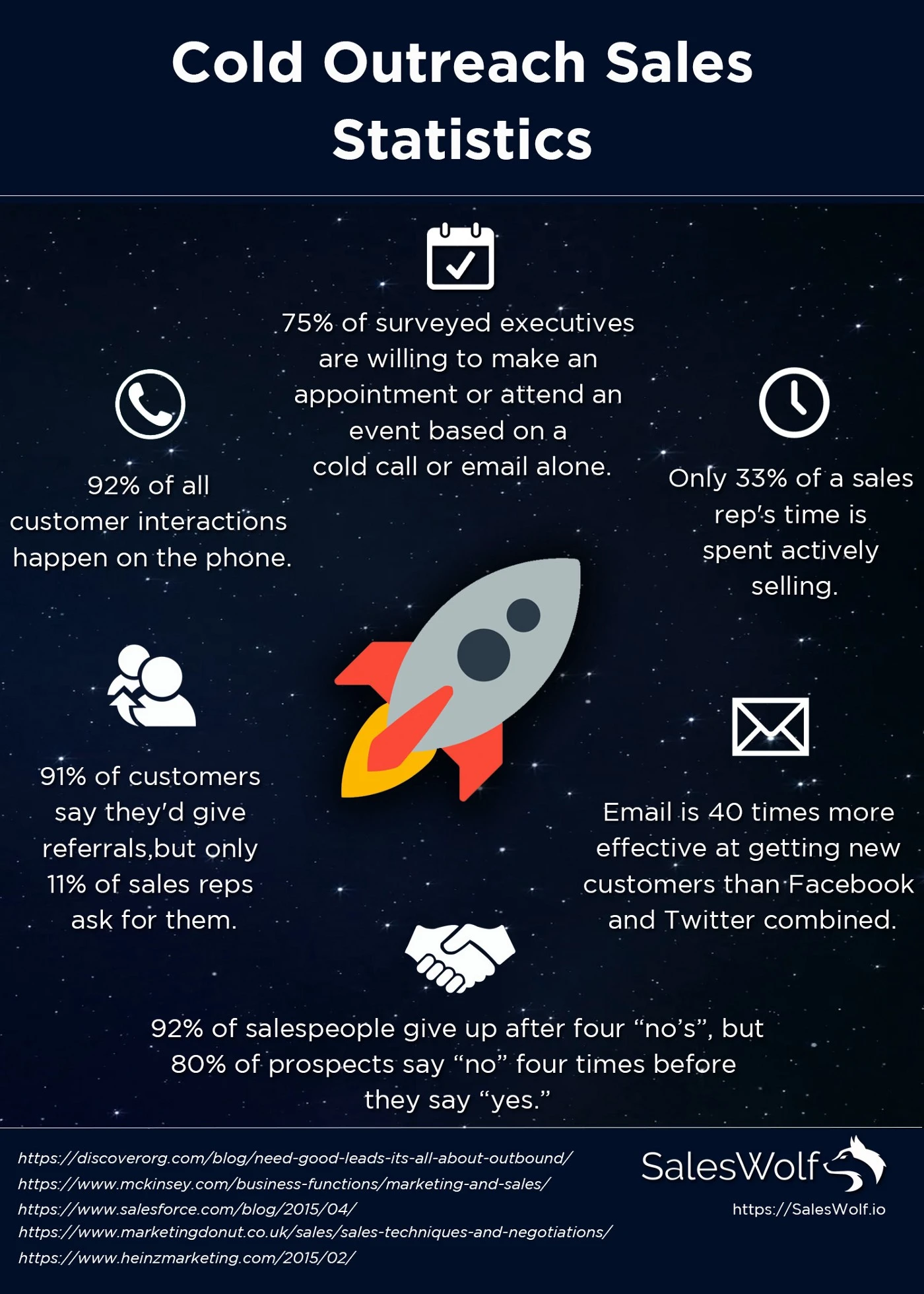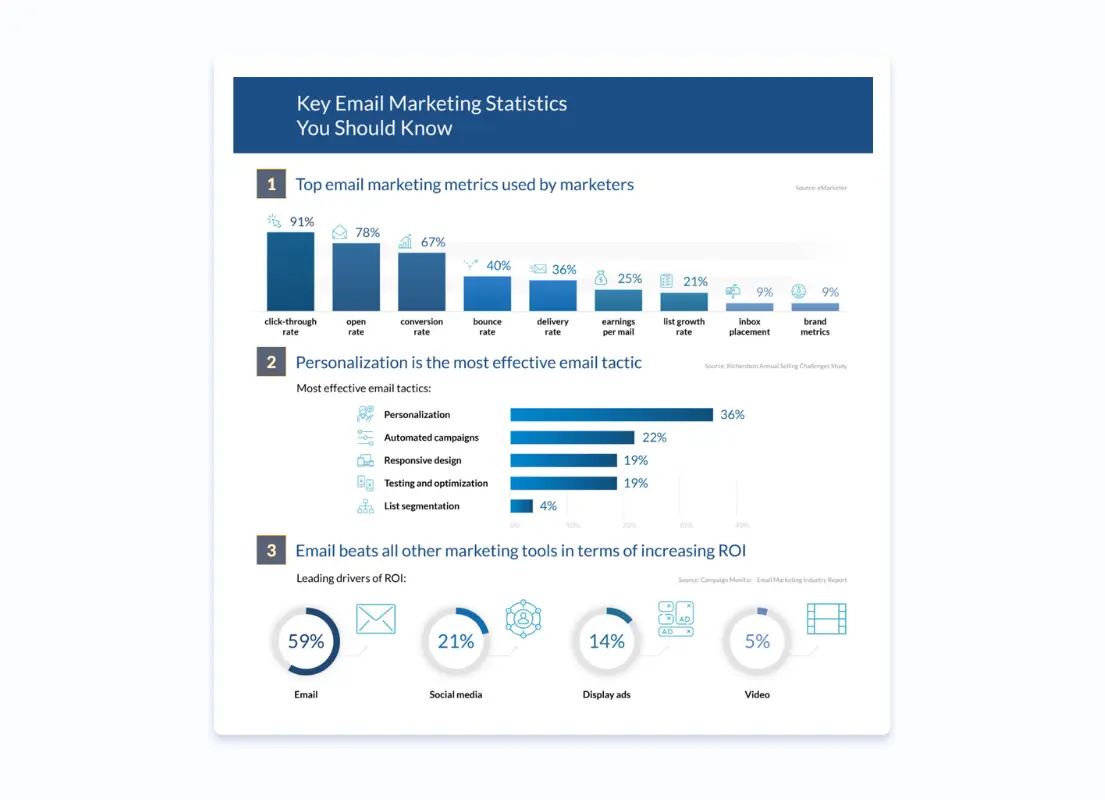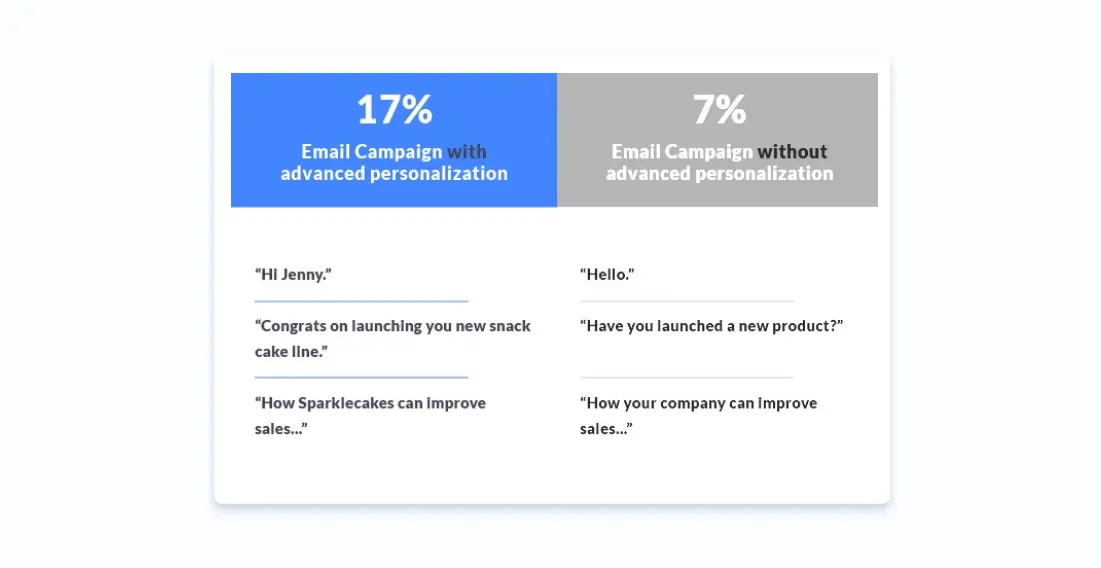5 best practices for cold emails to close leads, land sales
1. Best practices for cold emails #1 — write a great subject line
2. Best practices for cold emails #2 — keep it brief
3. Best practices for cold emails #3 — make it clear and simple
4. Best practices for cold emails #4 — personalize
5. Best practices for cold emails #5 — don’t give up
Useful tools:
1. Newoldstamp - Email signature marketing
2. Mailchimp - Email builder and sender
3. Hubspot Email Marketing - Marketing automation platform
4. MailerLite - Landing page builder
5. Canva - Online tool for making designs
Email marketing has an ROI upwards of 3,600% — some say as high as 4,200%.
Even if we accept the conservative 3,600%, that’s an impossible statistic to ignore.
Why is it so high? There’s a lot we could go into here. For example, 61% of consumers say they want to get promotional emails weekly.
38% want promotional emails even more often.
And what about executives? They’re actually much more receptive to cold emails than you might think. Fully 75% of executives said they’re “willing to make an appointment or attend an event based on a cold call or email alone.”

source: Medium
And when it comes to cold emailing, the statistics are more sobering. The average response rate is 1–5%.
However, some marketers/salespeople saw a response rate of 15–20%.
And conversion rates? The average is about 15%.
That’s something you just can’t ignore.
The ROI statistic, regardless of how you look at it, implies that email marketing is extremely effective. Even if your open rates, click-through rates, and sales are relatively low, with a wide enough net, you’re bound to make some significant sales.
It’s that gap between average response rates that we need to look at carefully. How do some marketers see response rates 3x–4x higher than others? How are some seeing response rates 20x higher?
And what about that conversion rate? Fifteen percent is an incredible success rate when all you’re investing is a little money in email marketing software, copy, and design.
If you want to see success rates like this, you need to do more than flood your leads with emails. You need your email copy to do the heavy lifting and close those leads.
For the sake of this article, let’s assume your audience has already opened the email. We’re talking about closing the lead. That happens in the body of the email, in the closing line, and in the CTA — not the subject line.
Here are some best practices for cold emails that will help you close more leads and reach those success rates the statistics tell us are possible.
Best practices for cold emails #1 — write a great subject line
35% to 47% of recipients open emails based on the subject line alone. Getting your email opened is an incredibly important first step.
If it doesn’t get opened, it doesn’t matter how good your copy is.

source: Financesonline
Some best practices for cold email subject lines include:
- Keep it under 60 characters — 82% of marketers send emails whose subject lines do not exceed 60 characters
- Keep it catchy — 33% of email recipients open emails because of catchy subject lines
- Use emojis, but use them sparingly — Emails with emojis in their subject lines have a 39% open rate on average
- Watch your word count — Emails with 6 to 10 words in their subject lines have the highest open rate at 21%
- Personalize it — 26% of subject lines with personalization have a higher chance of being opened
Once you’ve got that critical open, you have to draw them in with amazing content.
Best practices for cold emails #2 — keep it brief
On average, people see between 5k and 10k advertisements every single day.
How long do you think they pay attention to each one?
Your message might be important to you — really important — but your customer isn’t going to assume this.
You have to win them over to some extent. It’s true that there are just going to be some customers itching to make a purchase from your company. Your email just happens to hit them at the right time.
But the majority of people need some convincing.
They need to understand why you’re the right brand for them, why you have the right product/service for them, and why the purchase is worthwhile.
They need to understand this quickly.
It’s not like they get your email, make a cup of coffee, and then sit back and relax while reading in-depth what you have to offer.
You don’t have a lot of time to make your point.
If they’re reading your email, you’ve piqued their interest somehow with your subject line.
Hopefully, you didn’t do anything gimmicky to just get the open — you communicated value clearly, a value that aligns with what they’re looking for.
They’ve got dozens, if not literally hundreds, of emails to wade through for the day. They’ve opened yours.
Don’t waste their time.
Too many words results in skimming. Skimming is dangerously close to closing the email.
Keep the email as brief as possible.
One way to do that is by boiling down your messaging and getting it as tight and clear as possible.
Best practices for cold emails #3 — make it clear and simple
If your readers have to wade through walls of text to figure out your message, they’re not going to do it. Even if your copy is brief, if it’s complex and unclear, if you make them frown with frustration, you’ve lost them.
They’re going to close your email, and they’re going to move on to the next one.
Cold emails that are most effective have a clear, simple message. That means they don’t have to work to understand what you have to offer. Their questions are answered by the copy before they even come up.
Clarity depends on goals as well — your goals. Maybe you don’t want to tell them pricing info just yet. If that’s the case, make it clear. Say something like, “I’d love to discuss pricing with you on our call.”
Clarity is most necessary for the call to action. People need to know what to do next. If they’ve read through your email and made it to the end, don’t confuse them by giving them too many different paths.
Narrow it down to a single action. What do you want them to do most? Make that the CTA.
You might be tempted to have a secondary CTA, but all this does is add confusion. Stick to a single action.
That makes things simple. Your leads don’t want to think any more than they have to when it comes to sales emails — don’t make them.
Best practices for cold emails #4 — personalize
According to FinancesOnline, personalization is the most effective email marketing technique out there.

source: Financesonline
To put it simply, people like to know that you’ve done some research on them. Otherwise, you’re just spamming.
“26% of subject lines with personalization have a higher chance of being opened,” but personalization doesn’t stop at the subject line.
You need to personalize all of your copy. Reply rates for cold emails skyrocket to 17% with advanced personalization.

source: Propeller
Advanced personalization isn’t as hard as it sounds. It just requires you to do a little research.
In the image, you can see that it’s more than just using their name. It’s digging up a fact about them that will resonate. It’s replacing boilerplate copy with details that apply to them directly.
But even great copy isn’t enough on the first try.
You need to keep going.
Best practices for cold emails #5 — don’t give up
Brevity and clarity are important, but by themselves, they’re not going to close leads in large numbers. One of the best practices for cold emails — if not the best practice — is to send multiple emails.
Sure, you might get lucky and run across a few people who are just about ready to buy anyway, where a single email is all you need to make the sale.
But for the most part, you need multiple touches — 8 on average — before someone is willing to pull the trigger.
And as the image from Michael Phillips above showed, 80% of prospects say “no” 4 times before they say “yes.”
If you’re relying on a single cold email, you’re just not going to get that incredible ROI.
You have to keep trying.
Come up with a logical series of emails that you can send in an automated drip. Create unique drips for each market segment. Set up those drips, and then let the email marketing software do its magic.
Clarity and brevity still matter, but in the long run, it’s the tenacious marketer who is going to be successful.
Learn more about Mailbutler
Mailbutler allows you to easily schedule your cold emails, giving you the automation you need at a fraction of the price of other email marketing automation tools.




